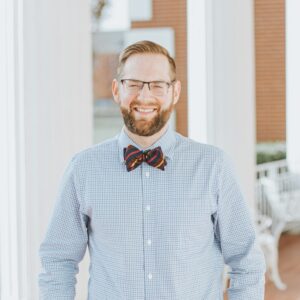
Learning and Teaching Without Walls (Pt. 3)
“You are a creature in the midst of creation.” Those words, which I have heard or recited in versions of the Ignatian Examen countless times in the past decade, kept returning to my mind as we gathered in our outdoor classroom. That space and time made it possible to better notice and appreciate our communities of fellow creatures, human and nonhuman.
As I noted in my first blog in this series, my students in “Contemporary Theology” and I found it almost impossible to sustain discussion indoors while masked and socially distanced. Outside, though, our conversations often flowed freely. Experienced educators work hard to cultivate a sense of belonging, and each class develops its own collective personality. I have noticed that the classroom communities that I have had since beginning to teach outside have often been markedly stronger—students are more resilient, more engaged, and more willing to be challenged constructively—than those I was able to foster indoors.
I took primary responsibility for setting up and tearing down the classroom—including moving our portable whiteboard, stored chairs, and a table for my laptop for Zooming students. But I invited students to share in such responsibilities and many commented that doing so enhanced their learning and sense of belonging. By meeting outside, despite the challenges, students noted that they knew they were doing their part to keep our community safe. The distinctive contingencies and flexibility required to be outside enhanced our sense of togetherness. The specialness of the opportunity to be outside seems to have primed us to attend well to one another and to the unique tasks of the moment, working to ensure that we could safely and fruitfully continue meeting.
Neighbors and members of our uncommon community often passed by and through our classroom. Students, faculty, staff, administrators, prospective students, and other visitors passed by, reminding us of the institutional context of our shared work and of our accountability to one another. We were reminded of our relationships with and impacts on the nonhuman neighbors in our community constantly. I was not the only one to root around in the mulch—one day when I reached into the soil to show my students the mycelium, I discovered instead a beautiful millipede going about their own work of decomposition. We were joined by towhees, robins, and countless other birds who made a ruckus in the leaves and mulch of the flower beds as they searched for food. Sometimes five-lined-skinks, catching the sun with electric blue tails, skittered by or paused to soak up the heat from the bricks. Bald eagles, ospreys, red-tailed hawks, black vultures, and turkey vultures soared above us majestically.
The bird song sometimes overwhelmed us in its constancy and diversity. In late summer and early fall cicadas serenaded us with the birds, and in the spring upland chorus frogs and spring peepers made their contributions to the soundscape. On a warm early spring day in March one class asked if we could meet for class on the bank of the French Broad River down the steps from our normal classroom. An otter, a great blue heron, and countless bluebirds joined us that day—or rather, we joined them. Sometimes harmless but intimidating carpenter bees insisted on participating in our discussion, buzzing and bumping along the picnic tables. On multiple occasions I had to rescue wasps and spiders from terrified students, gently scooping them up and relocating them away from danger. God had created them and declared them good after all (Genesis 1.21, 24, 25), our ignorance and incredulity notwithstanding. Just as God does not need us (Acts 17.25), I reminded everyone (including myself) that God does not need them; but God nevertheless calls us and them into being out of love. One September day immediately following class a student shouted my name from just up the stairs: “Dr. Gordon, there’s a snake!” A midland rat snake was crossing the road towards our classroom. The distressed serpent had crawled through erosion control mesh that was cutting and constricting its body. It was a poignant reminder of how human decisions and assumptions cause suffering for our nonhuman neighbors. I borrowed a pocketknife from a student, freed the snake, and released it down the hill.
Once, a flock of thousands upon thousands of starlings brought class to a complete standstill. The deafening cacophony of their calls left us no choice but to watch as they moved from tree to tree over an area where the undergrowth consisted solely of English ivy. Both groups of organisms were clearly thriving, but they do so at the expense of our native nonhuman neighbors. They are both here in east Tennessee, I reminded us all, because of human choices.
In my classroom without walls, we often talked about God’s transcendence and otherness, but we learned also of God’s nearness, God’s care for our particularity, and that our particularity is bound up in countless relationships with other persons, and with our nonhuman neighbors—both animate and stationary. Such lessons came to us outside without much effort on my part. Resting in the cool of autumn and the early warmth of spring, listening to the birds and cicadas and frogs and lawnmowers and children, smelling the damp mold and blooming roses, setting up and putting away chairs or shade canopies, we could sense and know well our connections to one another, to the place itself, and to God, as “creatures in the midst of creation.”
Leave a Reply